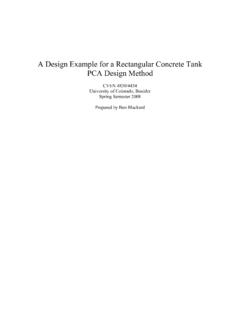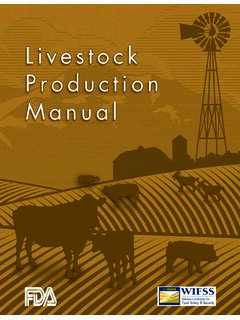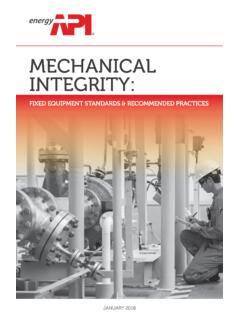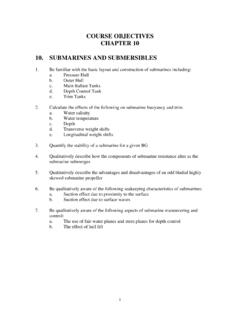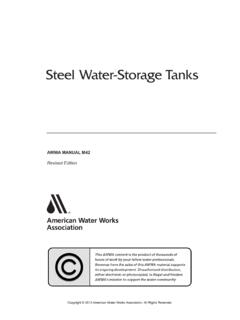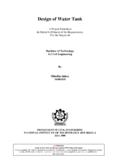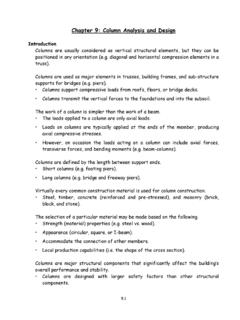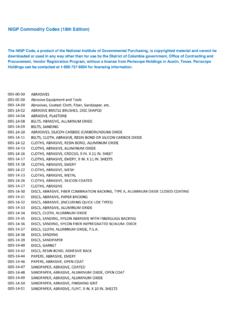Transcription of Third Edition - Association of American Railroads
1 Third Edition INSIDE COVER Issued by: Association of American Railroads /Bureau of Explosives 425 Third Street, SW Suite 1000 Washington, DC 20024 Andy Elkins Telephone: 202/639-2100 Web site: Printed in the United States of America Copyright 2017 by the Association of American Railroads , all rights reserved, Third Edition (February 6, 2017) Later Editions will supersede this document. Do not alter. Do not copy or distribute without express authorization from AAR. Not for sale or re-publication. FIELD GUIDE TO TANK CARS Compiled by Allen D. Maty (Ret.), Chief Inspector, Bureau of Explosives The Association of American Railroads and the Bureau of Explosives gratefully acknowledge the assistance of GATX Corporation, Midland Manufacturing Company, UTLX Manufacturing, Trinity Industries, Inc.
2 , Chart Industries, The Chlorine Institute, Railway Association of Canada, Veolia North America, Salco Products, Transquip USA, Kelso Technologies, Inc., Canadian National Railway, Kansas City Southern Railway, and Norfolk Southern Railway Company for granting us permission to use their tank car drawings and photographs. We also wish to thank Sam Chapman, Charles Wright, Patrick Student, Paul Williams, and William Oertly for their critical review and/or comments in the previous editions of the Field Guide. Without their help, the initial publication would not have been possible. The Bureau of Explosives wishes to acknowledge the following individuals for their assistance in preparing this Edition of Field Guide to Tank Cars: Andy Ash (Railway Association of Canada), Patrick Brady (BNSF Railway), Anthony Ippolito (Canadian National Railway), Jim Kozey (Canadian Pacific Railway) Robyn Kinsley (The Chlorine Institute), Allen Maty (Bureau of Explosives (Ret.))
3 , Tim O Brien (Union Pacific Railroad), Steve McNealy (Kansas City Southern Railway), N. Scott Murray (ExxonMobil Chemical Company), Allen Richter (Conrail), Glen Rudner (Norfolk Southern Railway Company), Lane Sekavec (Union Pacific Railroad), Paul Williams (Norfolk Southern Railway Company), and Charles Wright (Union Pacific Railroad (Ret.)). Acknowledgements Field Guide to Tank Cars is dedicated to the memory of: Mr. Roy J. Holden (1921 1989) Engineer, Technical Services Bureau of Explosives Association of American Railroads Uncle Roy was a pioneer in the development of tank car damage assessment techniques. His wit, wisdom, experience and dedication to tank car safety are sorely missed. Dedication Page intentionally left blank. v Introduction .. 1 Section 1: Tank Car Classification and Specifications.
4 5 Section 2: Tank Car Safety Systems .. 13 Section 3: Tank Car Stenciling and Markings .. 21 Section 4: Nonpressure Tank Cars .. 29 Section 5: Pressure Tank Cars .. 69 Section 6: Cryogenic Liquid Tank Cars .. 91 Section 7: Guidelines for Initial Emergency Response .. 97 Section 8: Glossary of Railroad and Tank Car Terms .. 105 Annex A: AAR, DOT, and Transport Canada Safety Enhancements for Nonpressure Tank Cars .. 119 Table of Contents vi Specification: DOT-111A100 ALW1 .. 6 Nonpressure Tank Car Designator Table .. 11 Rail Car Orientation Diagram .. 12 Double-Shelf Couplers .. 13 Identification Plate .. 23 Variable ID Plate .. 23 Tank Car Qualification Stencil .. 25 Typical Remote Monitoring Devices .. 27 Location of Key Stenciling .. 28 DOT/TC-111A100W1 Tank Car for Alcohol and Methanol Service.
5 35 Top Operating Platform for Nonpressure Tank Cars (Post 1982) .. 36 DOT-111A100W2 Tank Car for Sulfuric Acid Service .. 37 Loading and Unloading Arrangement and Top Operating Platform for Sulfuric Acid Cars .. 38 List of Illustrations and Photographs vii DOT/TC-111A100W5 (Rubber Lined) Tank Car for Hydrochloric Acid Service .. 39 Loading and Unloading Arrangement for DOT-111A100W5 (Rubber Lined) Cars .. 40 Top Operated, Bottom Unloading Valves .. 41 Bottom Outlet with Skid Protection .. 42 Internal Ball Valve .. 43 Jamesbury and Posi-Seal Bottom External Butterfly-Type Valve .. 44 Typical Bottom Washout Arrangements .. 45 Pressure Relief Valve .. 46 Safety Vent .. 47 8 Line Interior Heater Coil, Simplex System, Connections at Bottom Outlet .. 48 10L 2T Serpentine Manifolded Half-Oval Outside Coil (Post 1974).
6 49 Sulfuric Acid Tank Car with Top Fittings Protection .. 50 Sodium Hydroxide Tank Car with Top Fittings Protection .. 51 Bottom Outlet Valve with Operating Instructions .. 52 Class DOT/TC-111A CPC 1232 Tank Car for Flammable Liquid Service .. 53 Headshield Detail .. 54 DOT Specification and Qualification Stencil .. 54 Class DOT/TC-117 Tank Car Features .. 55 viii DOT/TC-117J100W Tank Car for Flammable Liquid Service .. 56 Class DOT/TC-117 Manway and Top Fittings Protective Housing .. 57 Class DOT/TC-117 Fittings Arrangement Inside Protective Housing .. 57 Class DOT/TC-117 Bottom Outlet Operating Mechanism .. 58 DOT/TC-117R100W Tank Car for Flammable Liquid Service .. 59 DOT-117R100W Specification and Qualification Stencil .. 60 DOT-117R100W Retrofit and Original ID Plates.
7 60 Examples of Nonpressure Tank Car Service Equipment: Single Bolt Manway Covers .. 61 Flexible Liquid Eduction Tubes .. 62 Safety Vents (Rupture Disc Device) and Surge Suppressors .. 62 Vacuum Relief Valves .. 63 Reclosing Pressure Relief Valves .. 64 Constant Force Spring Pressure Relief Valves .. 65 New-Style Bottom Outlet Valves and Operating Handles .. 66 Lined Fittings Manway Plates for Hydrochloric Acid Tank Cars .. 67 Typical 20- and 22-Inch Hydrochloric Acid Manway Fittings Arrangements .. 68 DOT/TC-120J200W for Flammable Liquid Service .. 70 ix DOT/TC-112J340W for Liquefied Petroleum Gas and Anhydrous Ammonia Service .. 76 Loading and Unloading Arrangement for Liquefied Petroleum Gases and Anhydrous Ammonia Service .. 77 DOT/TC-105S500W for Chlorine Service.
8 78 Typical Chlorine Tank Car Fittings Arrangement .. 79 DOT/TC-120J200W for Flammable Liquid Service .. 80 Magnetic Ball Gauging Device .. 81 Pressure Relief Valves that May Be Found on Pressure Tank Cars .. 82 Fittings Arrangement for Carbon Dioxide and Nitrous Oxide Tank Cars .. 83 New Chlorine Tank-Within-A-Tank Design .. 86 Enhanced Fittings Arrangement for Chlorine Tank Cars with One Vapor Line .. 87 Cutaway View of Enhanced Fittings Arrangement for Chlorine Tank Cars .. 88 Enhanced Chlorine Fittings .. 89 Typical Cryogenic Liquid Tank Car (Class DOT/TC-113) .. 94 Typical Cryogenic Liquid Tank Car Fittings Compartment .. 95 Cryogenic Liquid Tank Car Fittings 96 x DOT Phase-Out Dates for DOT-111 and DOT-111 CP-1232 Tank Cars in High-Hazard Flammable Train Service.
9 122 DOT Phase-Out Dates for Non-DOT-117 Tank Cars in Class 3 (Flammable Liquids) Service (10/1/2015) .. 125 DOT Phase-Out Dates for Non-DOT-117 Tank Cars in Class 3 (Flammable Liquids) Service (as of 8/15/2016).. 128 Transport Canada Phase-Out Schedule for Tank Cars Transporting (Class 3) Flammable Liquids .. 130 1 Field Guide to Tank Cars is intended to be used by emergency responders and others involved with railroad tank cars. It provides information on the types, safety systems, stenciling, and markings of tank cars utilized to transport regulated (hazardous materials/dangerous goods) and nonregulated commodities. Given the varying characteristics of the different commodities being transported and the shipper s differing needs and uses, it is impossible to cover all the various types of tank cars and fittings used.
10 The illustrations contained in this guide are intended to provide a general overview of tank car types and typical fittings. They show the most common types of single-unit tank cars (a tank car tank mounted on, or forming part of, a railcar structure) currently used to transport both regulated (hazardous materials/dangerous goods) and nonregulated commodities. All railroad tank cars are built to specifications, standards, and requirements established, implemented, and published by the Department of Transportation (DOT), Transport Canada (TC), and/or Association of American Railroads (AAR). These specifications, standards, and requirements address tank car design, type, and thickness of material required to be used in construction, types of fittings, welding procedures, inspection, maintenance, repair, and quality assurance system requirements.





